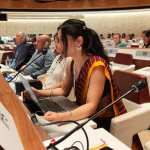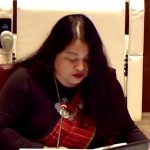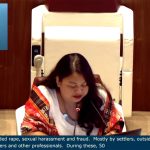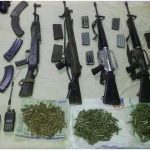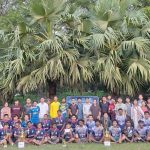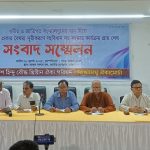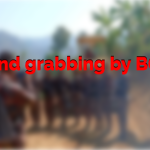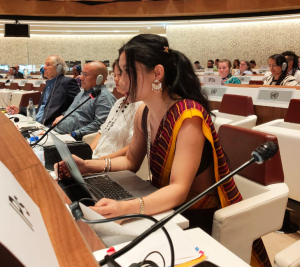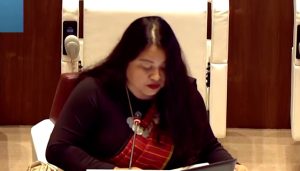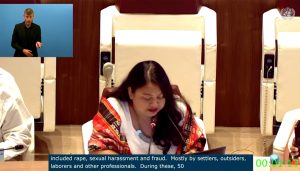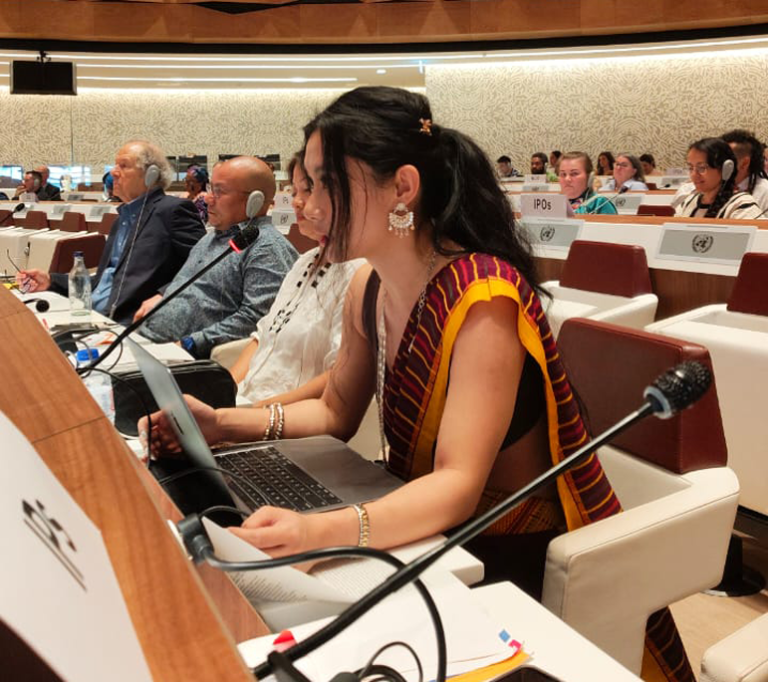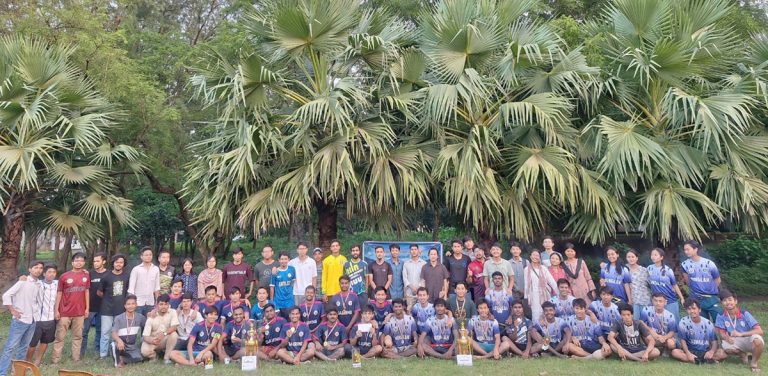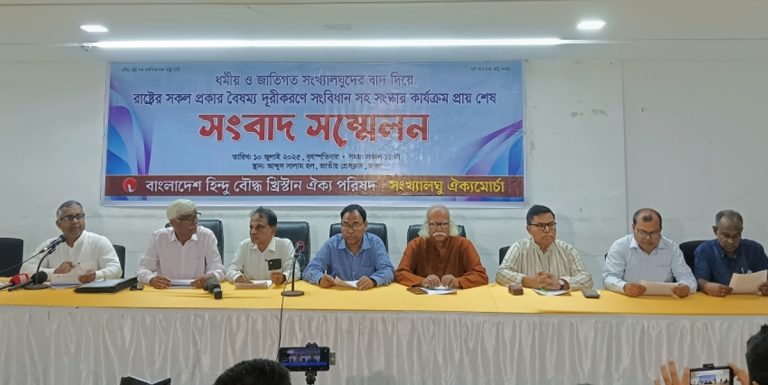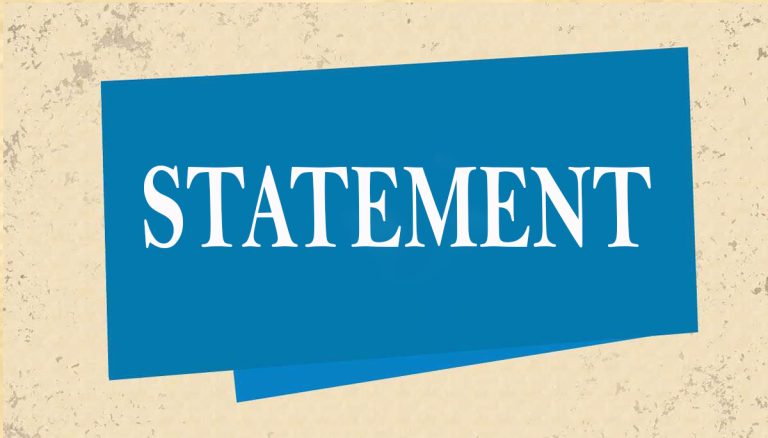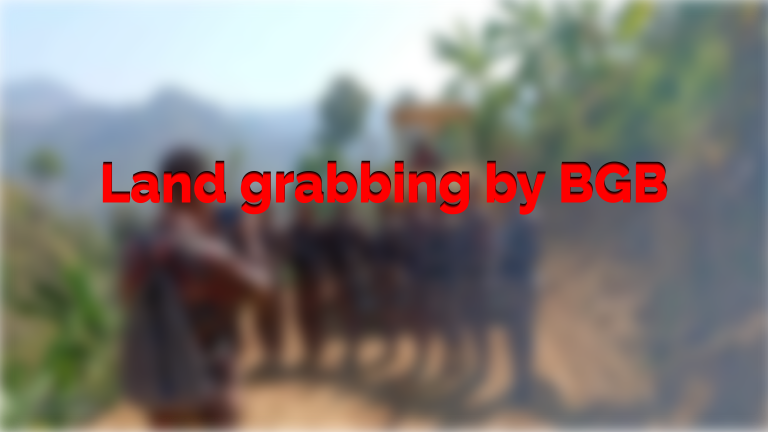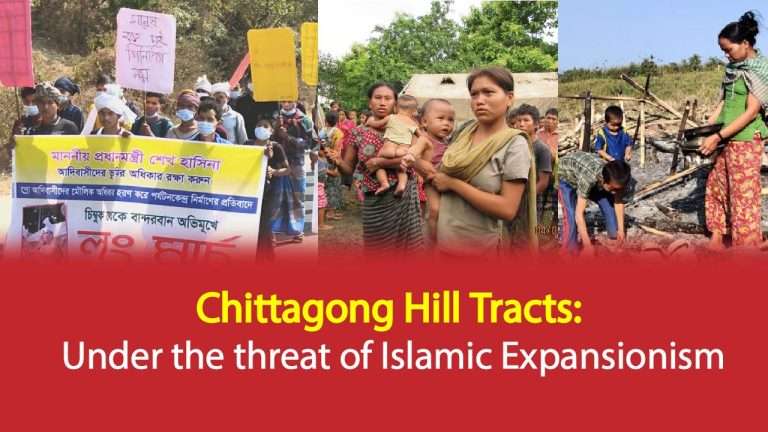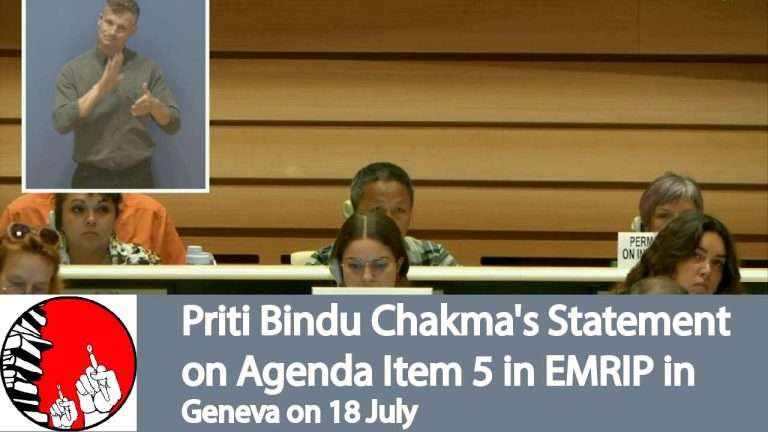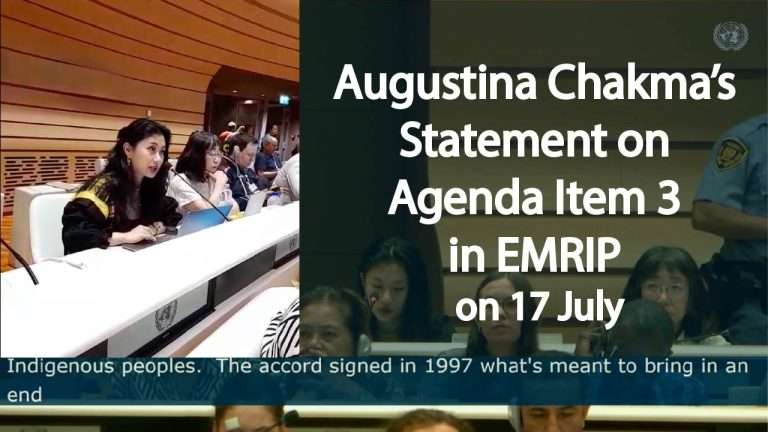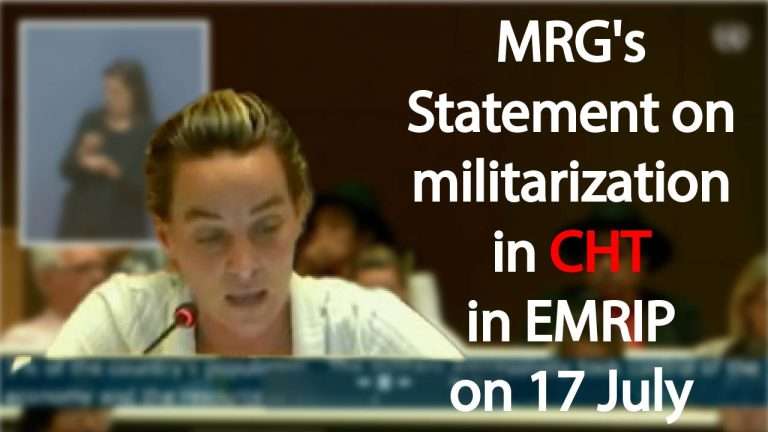Shakti Pada Tripura
Bangladesh is a country of multi nations, multi religions and multi cultures. Apart from the majority population Bengalis, indigenous peoples like Santal, Garo, Chakma, Marma, Tripura, Hajong, Khasi, Manipuri, Munda etc. have been living in this country since time immemorial. Some of these nations/peoples are Hindu, some are Buddhist, some are Christians, some are Muslims and so on. Bangladesh is the Muslim Bengalis-populated country. In terms of population, Hindu Bengalis are after Muslim Bengalis. Then there are the positions of different indigenous ethnic groups. There are more than 50 indigenous ethnic groups living in Bangladesh. History testifies that the indigenous peoples living in Bangladesh are the native sons of the land of this delta region. Koch, Barman, Garo, Khasi, Tripura, Chakma, Marma, Kol, Bhil, Munda are all natives of this delta region. Before the arrival of the Aryan people in the delta region, the region was inhabited by indigenous peoples.
On the other hand, even in the anti-British movement, the indigenous peoples first soaked the soil of our motherland Bengal in blood. Since then, the soil of Bengal has a close relationship with the blood of indigenous peoples. But since the formation of the nation-state of Pakistan, the state has begun the process of severing the pulse of the indigenous peoples with the soil of Bengal. The Pakistani ruling class took all kinds of initiatives to make Pakistan as a Muslim state and a territory of the Muslim people. In order to change the demographics, the Muslim population was settled down in non-Muslim areas. Hence, lands of indigenous peoples were forcibly occupied, religious and ethnic minorities, including indigenous peoples, were forced to flee from the country and deprived of their rights.
This trend continued even after the independence of Bangladesh, while ethnic and religious minorities, including the indigenous peoples of the country, participated in the 1971 liberation movement in order to get rid of the communal rule and exploitationofthe Pakistani ruling class. Thousands of religious minorities, including indigenous peoples, sacrificed their lives in this war of liberation. However, it is very sad but true that when the constitution of newly independent Bangladesh was drafted in 1972, the indigenous peoples were made Bengalis. It is written in the constitution that the people of Bangladesh are Bengalis as a nation. Through this article of the constitution all the Bengali, non-Bengali people and indigenous peoples of Bangladesh were turned into Bengali.
Even after independence, the ruling class of Bangladesh, like the Pakistani ruling class, started oppressing and depriving the indigenous peoples and religious minorities. Thousands of acres of lands of indigenous peoples were confiscated. During the reign of Zia Rahman, thousands of Muslims were settled in the Chittagong Hill Tracts (CHT). One of its goals was to turn the CHT into a Muslim-dominated region. Military supremacy was established in the CHT to protect these settlers and to continue the repression upon the indigenous peoples. One after another genocides were committed with the plan to force the indigenous peoples fleeing from the country. All in all, the state pushed the indigenous peoples from the soil of Bengal towards mental and geographical isolation. That is how the process of ethnic cleansing began. But before the Bengali people settled in the delta region, the indigenous peoples struggled with the ferocious animals and nature of the region to make the land of Bengal cultivable and habitable.
So, the history testifies that the sons of the soil of this delta region were ancestor of the various indigenous ethnic peoples, who were described as non-Aryans in the pages of history. People of different races in this delta region know and recognize these sons of soil as indigenous. In this connection, the statement of eminent researcher and historian Mesbah Kamal is noteworthy. He said, “The Bengalis of the Rajshahi region know the indigenous peoples of that region as ‘indigenous origin’.” The same was echoed in the speeches of prominent politicians Rashed Khan Menon and Fazle Hossain Badshah. But in 2010 the ruling party opined that there are no indigenous peoples in Bangladesh, there are tribes and small ethnic groups. But anthropologists in Bangladesh say the term ‘tribal’ in anthropology or sociology is now obsolete. Because this word means primitive, barbaric etc.
On the other hand, small ethnic group cannot be the name of a nation and peoples. In addition, ‘small’, ‘sub’ – these are insulting words. This opinion was given by the anthropologists of Bangladesh. Ignoring the views of anthropologists and indigenous peoples of Bangladesh, the Sheikh Hasina government enacted the ‘Small Ethnic Group Cultural Institutions Act’ in 2010. Then the Sheikh Hasina government inserted thesetermsas small ethnic groups, tribes etc. in the constitution. The Sheikh Hasina government then banned the use of the word ‘indigenous peoples’. By taking this initiative, Prime Minister Sheikh Hasina herself and her government itself violated the constitution of the Awami League, the promise of the election manifesto and it is also against the spirit of the liberation war. This is because the constitution of the Awami League (see Article 19 of the Pledge Part of the Constitution) and the election manifesto (see the 2008 election manifesto of the Awami League) have referred to the indigenous peoples of this country as ‘Adivasis’.
Recognition as ‘Indigenous Peoples’ in various laws of the country (CHT Regulation of 1900, State Acquisition and Tenancy Act of 1950, Finance Act of 1995, National Policy, such as National Education Policy 2009, PRSP, National Budget-2009, various judgments of thecourt, etc.) was made. The word indigenous peoples is also mentioned in the Small Ethnic Group Cultural Institution Act of 2010. So, the indigenous peoples of Bangladesh have already been recognized as ‘indigenous’ in the various laws of the country. Hon’ble Prime Minister Sheikh Hasina herself in her goodwill message (speech given in ‘Samhati’ magazine published by Bangladesh Indigenous Peoples Forum in 2000 AD) marking the International Day of the World’s Indigenous Peoples referred to the Adivasis of this country as ‘indigenous peoples’. Therefore, there can be no reason to say that the adivasis of this country are not ‘indigenous peoples’ and the adivasis of this country are not recognized as ‘adivasi’ in the law of the country.
Many people opined that recognizing the indigenous peoples of this country as ‘indigenous’ will be detrimental to the state and the territory. If so, did the countries that have recognized the indigenous peoples as ‘indigenous’ have not suffered any loss? In addition to America, Australia and Europe, in our Asian continent, in the Philippines, Japan, Malaysia, etc., indigenous peoples are recognized as ‘indigenous’ in the constitutions. Where is the harm of the state or territory of those countries? On the contrary, if a nation or a section of citizens is not given their due rights, then there are various problems in the country. There are bright examples of such kind in different countries of the world.
Who are indigenous peoples and who will be called indigenous peoples – many people have no idea about this. Many people confuse the two words indigenous peoples and native residents. It does not mean that the peoples will be indigenous if they are native resident to a particular region. In order for the people to beconsidered asindigenous peoples, they must have the characteristics of the indigenous peoples as defined by the United Nations or the International Labor Organization (ILO). Otherwise, the native resident people cannot be termed as indigenous peoples.
Some of the characteristics that are internationally (UN and ILO) recognized in determining who are ‘indigenous peoples’ are: (1) Whose role in the current state governance process is absolutely marginal, (2) Those whose non-participation or marginal participationin the modern state formation process, (3) Those who settle internal social disputes through customary law rather than state law, (4) Those who have traditional institutions to enforce traditional laws, (5) Those who have a spiritual and cultural relationship with the land, (6) Those who have lived in their own territories since time immemorial, especially since colonization period – those who have these characteristics are referred to as ‘indigenous peoples’. Analysis shows that these internationally recognized features are very similar to the characteristics of the indigenous peoples of Bangladesh. Therefore, the indigenous peoples of Bangladesh have the right to be considered as indigenous peoples on the basis of native residents or internationally defined characteristics.
Moreover, it is up to them to decide the name of a nation or peoples. Naming of a nation/peoples without consulting with them or without their consent it is tantamount to insulting and humiliating that nation/peoples. So, neither the state nor any other nation has the right to name any nation/peoples. The right to self-identity is a recognized human right. It is to be noted that even though a section of the ruling class does not want to recognize the indigenous peoples of Bangladesh as ‘indigenous peoples’, the people of Bangladesh, Bengali people, Bengali intellectuals, democratic and progressive civil society of the country have been recognizing the indigenous peoples of this country as ‘indigenous’. Many laws of Bangladesh also recognize the indigenous peoples of the country as ‘indigenous’. The Constitution of Bangladesh also indirectly recognizes the indigenous peoples (CHT Regulation of 1900 is recognized as the effective law mentioned in the Constitution and the State Acquisition and Tenancy Act of 1950 is included in the Constitution) as ‘indigenous’. Therefore, it is not entirely true that the Adivasis of Bangladesh are not recognized as ‘Adivasis’ in the parliamentary and constitutional laws of Bangladesh.
Heads of state or government of different countries of the world have apologized to the indigenous peoples for their past wrong deeds. Prime Minister Sheikh Hasina and her government, reversing their earlier wrong stance, acknowledging the contribution of indigenous peoples of the delta region, and admitting their contribution to the anti-British movement and liberation war, recognizing them as ‘indigenous’ in the constitution,will come forward to establish political, economic and cultural rights including rights to land and territory of the indigenous peoples – this is what the country’s intellectual, democratic and progressive-minded civil society and indigenous peoples expect.
If the Sheikh Hasina government takes these initiatives and implements them successfully; as a member state of the United Nations, Bangladesh will show respect and reverence to the theme of the UN for this year, “No One Left Behind: Calling for New Social Commitment to the Establishment of Indigenous Rights.”The Sheikh Hasina government can establish a system of self-government for the indigenous peoples by recognizing them as ‘indigenous’ in the constitution of Bangladesh and also by implementing CHT Accord of 1997 properly and fully in case of the CHT region as a new social commitment and as part of the implementation of this commitment. No doubt, this will benefit Bangladesh, the state and the people of the country, including the indigenous peoples.
Shakti Pada Tripura: Organizing Secretary of Bangladesh Indigenous Peoples Forum.
